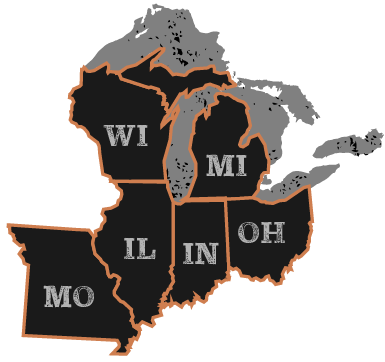
In 1967, the U.S. government began requiring states to enact a universally adopted motorcycle helmet law. In order to qualify for certain federal highway safety funds, and in an attempt to improve highway safety, there were even penalties that could be assessed to the states for non-compliance.
By 1975, all but three states had fully implemented these laws. By 1976, however, congress revoked the ability of the federal government to enact penalties for noncompliance, and the states began to strip many of these helmet laws down to apply only to young or non-experienced riders. Now, what states require can vary greatly. It’s always recommended to check the laws of the area you’re planning on visiting to make sure that what the state requires of a person is what you understand to be the case.
How Helpful Are Helmets, Really?
In States without universal helmet laws, 57 percent of motorcyclists killed in 2019 were not wearing helmets, as compared to 9 percent in States with universal helmet laws. According to NOPUS, in 2019 DOT compliant motorcycle helmet use in States requiring all to use helmets was 89.2 percent compared to 56.5 percent in other States.
A really useful website to view helmet laws by state is maintained by the Insurance Institute for Highway Safety (IIHS). Many states’ Departments of Transportation (DOT), maintain useful motorcycle information on their websites . It’s always a good place to check to make sure that you and your passengers are covered by both the law and their insurance.
This is a good website to check if you’re planning a cross-country (or multi-state) trip. Pay close attention to what states require drivers and passengers to wear a helmet, though, as it’s easy to get tripped up. New York and New Jersey, for instance, require helmets for all riders. Whereas there is not helmet law in New Hampshire stating that riders must wear a helmet. In many states, the age cut off is 17 and younger, while some push that to 18 and younger, or even 20 and younger. Rhode Island, for instance, requires helmets be worn by anyone 20 and younger as part of the state’s motor vehicle safety standard.
Other Things To Keep In Mind When You’re Planning A Ride
A good ride can be quickly ruined when you or another operator in your party misunderstands federal motor vehicle safety laws, as well as what the the law requires of any state you happen to be riding through.
A couple of points to keep in mind: eye protection of some sort is required in most states. Required or not, good eye protection just makes sense when you’re out riding.
Also, in some states, safety laws are somewhat loosened if the rider successfully completes a motorcycle operator training and safety course. It might be worth looking into.
Midwest State by State Helmet Laws
